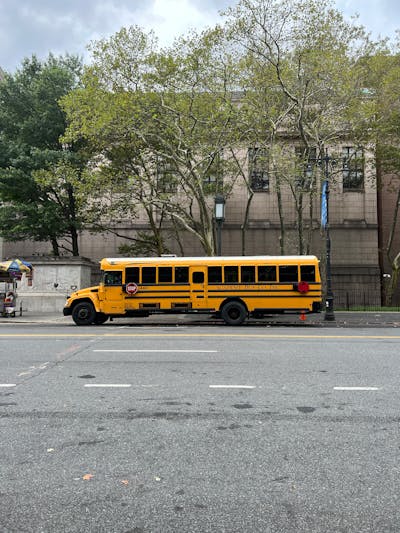Reading plays a crucial role in the intellectual and emotional development of children, especially in their early years. Primary school students are at a stage where they are developing literacy skills, expanding their vocabulary, and learning about the world through stories. The books they read should be engaging, age-appropriate, and educational. This article explores the types of books commonly included in primary school curriculums and recommended reading lists for young learners
1. Picture Books
Picture books are the foundation of early literacy. They contain vibrant
illustrations that help children understand the narrative even if they cannot
yet read fluently. These books also introduce fundamental concepts such as
colors, numbers, letters, and emotions. Some of the most popular picture books
for primary school children include:
·
The Very Hungry Caterpillar
by Eric Carle
·
Goodnight Moon by
Margaret Wise Brown
·
Where the Wild Things
Are by Maurice Sendak
·
Brown Bear, Brown Bear,
What Do You See? by Bill Martin Jr. and Eric Carle
These books are often used in kindergarten and early primary grades to
encourage a love for reading.
2. Early Readers and Phonics Books
Once children begin to recognize letters and sounds, they are introduced to
early reader books and phonics-based texts. These books use simple sentences,
repetitive language, and phonetic patterns to help children develop reading
fluency. Some popular choices include:
·
Dr. Seuss books
(e.g., Green Eggs and Ham, The Cat in the Hat)
·
Bob Books by Bobby
Lynn Maslen
·
Elephant & Piggie
series by Mo Willems
·
Biscuit series by
Alyssa Satin Capucilli
These books provide an excellent transition from picture books to more
complex stories.
3. Classic and Modern Chapter Books
As children advance in their reading skills, they move on to chapter books.
These books contain longer narratives, divided into chapters, with more
developed plots and characters. Some timeless and contemporary classics for
primary school students include:
·
Charlotte’s Web by
E.B. White
·
Matilda by Roald
Dahl
·
Magic Tree House series
by Mary Pope Osborne
·
The Boxcar Children
series by Gertrude Chandler Warner
·
Ramona series by
Beverly Cleary
These books introduce children to themes of friendship, adventure, and
problem-solving while strengthening their reading abilities.
4. Fairy Tales, Fables, and Folktales
Fairy tales and folktales play an essential role in early childhood
literature. They introduce moral lessons, cultural traditions, and imaginative
storytelling. Some well-known fairy tales and fables often included in primary
school reading include:
·
The Three Little Pigs
·
Cinderella
·
The Tortoise and the
Hare (Aesop’s Fables)
·
Jack and the Beanstalk
·
The Ugly Duckling
by Hans Christian Andersen
These stories not only entertain but also teach valuable life lessons.
5. Non-Fiction and Informational Books
Children need exposure to non-fiction books to expand their knowledge about
the world. These books introduce scientific concepts, historical events, and
cultural diversity. Some commonly used non-fiction books in primary school
include:
·
National Geographic
Kids series
·
The Magic School Bus
series by Joanna Cole
·
Who Was? series
(biographies of famous people)
·
Usborne Beginners
series (science, history, geography, and animals)
Non-fiction books help children develop curiosity and research skills from
an early age.
6. Poetry and Rhyme Books
Poetry books introduce children to rhythm, language patterns, and creative
expression. They often use humor, playful words, and repetition, making them
engaging for young readers. Some beloved poetry books for primary students
include:
·
Where the Sidewalk Ends
by Shel Silverstein
·
A Light in the Attic
by Shel Silverstein
·
A Child’s Garden of
Verses by Robert Louis Stevenson
·
Read-Aloud Rhymes for
the Very Young by Jack Prelutsky
Poetry books encourage children to experiment with language and express
themselves creatively.
7. Multicultural and Diverse Books
It is essential for children to read books that reflect different cultures,
traditions, and perspectives. These books help promote inclusivity and empathy.
Some notable diverse books for primary school children include:
·
Last Stop on Market
Street by Matt de la Peña
·
The Name Jar by
Yangsook Choi
·
All Are Welcome by
Alexandra Penfold
·
The Day You Begin
by Jacqueline Woodson
Reading diverse books fosters an understanding of different backgrounds and
experiences.
8. Graphic Novels and Illustrated Chapter Books
Graphic novels and illustrated chapter books are excellent choices for
reluctant readers and visual learners. They combine storytelling with engaging
illustrations to make reading more accessible. Some popular graphic novels for
primary school children include:
·
Dog Man series by
Dav Pilkey
·
The Bad Guys series
by Aaron Blabey
·
Narwhal and Jelly
series by Ben Clanton
·
Baby-Sitters Club
Graphic Novels by Ann M. Martin (adapted by Raina Telgemeier)
These books help bridge the gap between picture books and traditional novels
while making reading fun.
Conclusion
The books children read in primary school shape their imagination, critical
thinking skills, and love for literature. From picture books to chapter books,
fairy tales to non-fiction, each category serves a unique purpose in a child’s
educational journey. Encouraging children to explore a variety of books helps
build lifelong readers who enjoy learning and storytelling. Schools, parents,
and educators should work together to provide children with a rich and diverse
selection of books to support their literacy development and foster a lifelong
passion for reading.

